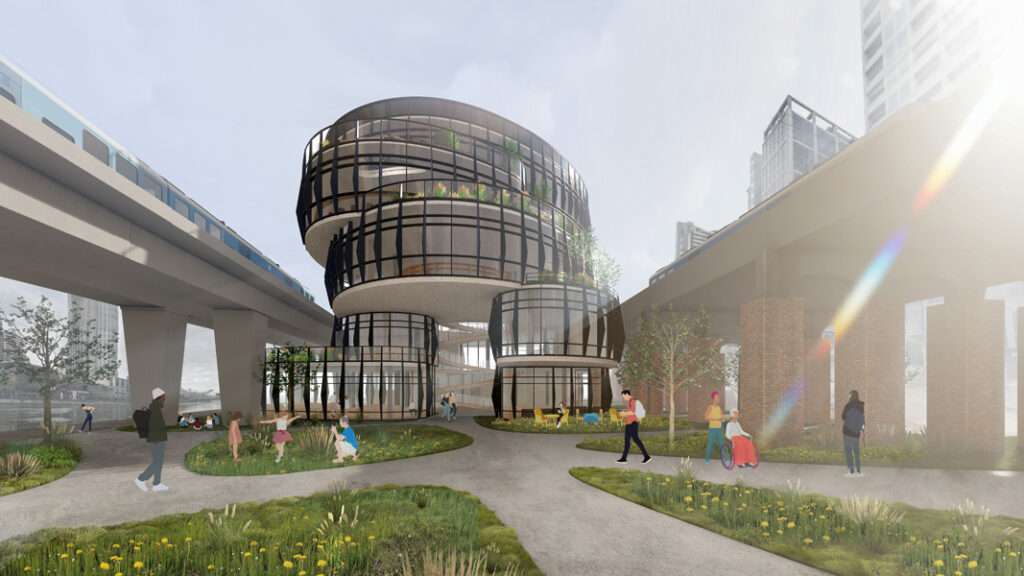Rhino 3D is a powerful tool for architectural design, but many architecture students struggle with its complexity and versatility. This article aims to provide practical guidance, tips, and techniques to help students overcome common challenges and enhance their modeling skills in Rhino 3D.
1. Understanding the Basics
Before diving into complex modeling, it’s crucial to master the basics:
-
- Interface Familiarization: Spend time understanding the Rhino interface, including the command line, viewports, and panels. This will improve your navigation and efficiency.
-
- Basic Commands: Learn essential commands such as
Move,Rotate,Scale,Extrude, andBoolean Operations. These are the building blocks of most models.
- Basic Commands: Learn essential commands such as
2. Efficient Workflow Strategies
Optimizing your workflow can save time and reduce frustration:
-
- Layers and Organization: Use layers to organize different elements of your model. This makes it easier to manage and edit complex projects.
-
- Keyboard Shortcuts: Customize keyboard shortcuts for frequently used commands. This speeds up your workflow and makes modeling more intuitive.
Surface modeling is a core aspect of Rhino:
3. Mastering Surface Modeling
-
- Creating and Editing Surfaces: Learn to use
Surface,Sweep,Loft, andPatchcommands to create complex surfaces.
- Creating and Editing Surfaces: Learn to use
-
- Control Points: Utilize control points to refine and tweak surfaces. Understanding how to manipulate these points is key to creating smooth and accurate models.
4. Utilizing Grasshopper for Parametric Design
Grasshopper, Rhino’s visual programming language, is a powerful tool for parametric design:
-
- Basic Concepts: Start with basic Grasshopper concepts such as components, wires, and data trees.
-
- Simple Definitions: Create simple Grasshopper definitions to automate repetitive tasks and explore parametric design.
-
- Advanced Applications: As you become more comfortable, explore advanced applications like adaptive facades, structural optimization, and form-finding.
5. Rendering and Visualization
Rendering your models can bring them to life and communicate your ideas more effectively:
-
- Rhino Render: Start with Rhino’s built-in rendering tools to get a feel for lighting, materials, and camera settings.
-
- Plugins: Explore plugins like V-Ray, Enscape, or KeyShot for more advanced rendering capabilities. These tools offer higher quality visuals and additional features like real-time rendering.
6. Common Challenges and Solutions
Addressing common problems can make your modeling process smoother:
-
- File Management: Avoid losing your work by regularly saving versions of your file and using Rhino’s
Autosavefeature.
- File Management: Avoid losing your work by regularly saving versions of your file and using Rhino’s
-
- Complex Geometry: Break down complex geometry into simpler parts. Use
SubDmodeling for organic shapes andNURBSfor precise surfaces.
- Complex Geometry: Break down complex geometry into simpler parts. Use
-
- Performance Issues: Improve performance by using
Meshtools to reduce polygon count and working in wireframe mode when modeling complex scenes.
- Performance Issues: Improve performance by using
7. Learning Resources
Take advantage of the wealth of resources available:
-
- Online Tutorials: Websites like Simply Rhino, YouTube channels like Rhino Tutorials, and platforms like LinkedIn Learning offer comprehensive tutorials.
-
- Community Forums: Engage with the Rhino community through forums like the Rhino Community Forum and Grasshopper 3D Forum. These platforms are great for troubleshooting and learning from others.
-
- Books and Courses: Consider investing in books like “Modeling Architecture with Rhinoceros 3D” and taking online courses for structured learning.
Conclusion
Mastering Rhino 3D takes time and practice, but by understanding the basics, optimizing your workflow, and utilizing available resources, you can become proficient in this powerful tool. Whether you’re creating conceptual designs, detailed models, or stunning visualizations, Rhino 3D can significantly enhance your architectural projects. Happy modeling!

This article aims to provide architecture students with a comprehensive guide to overcoming challenges in Rhino 3D. By following these tips and leveraging the recommended resources, students can enhance their skills and create impressive architectural models.
